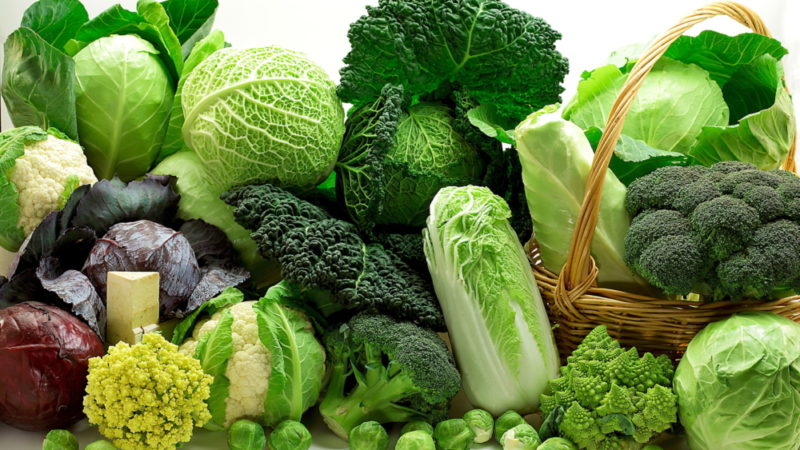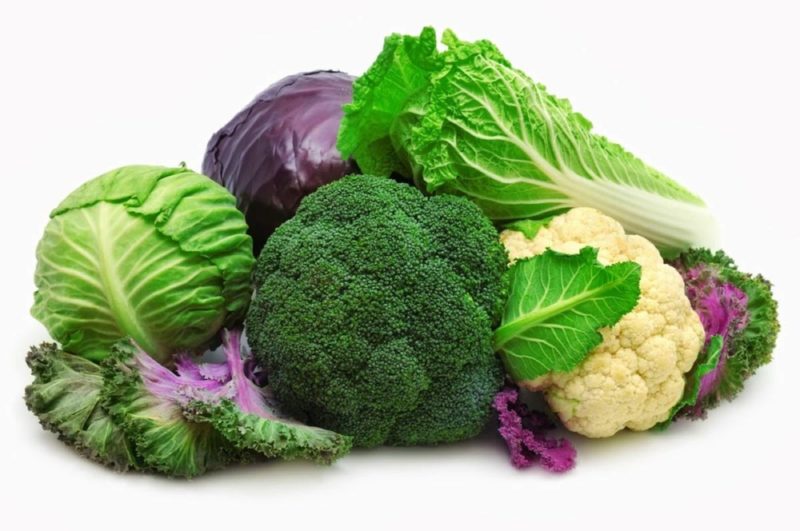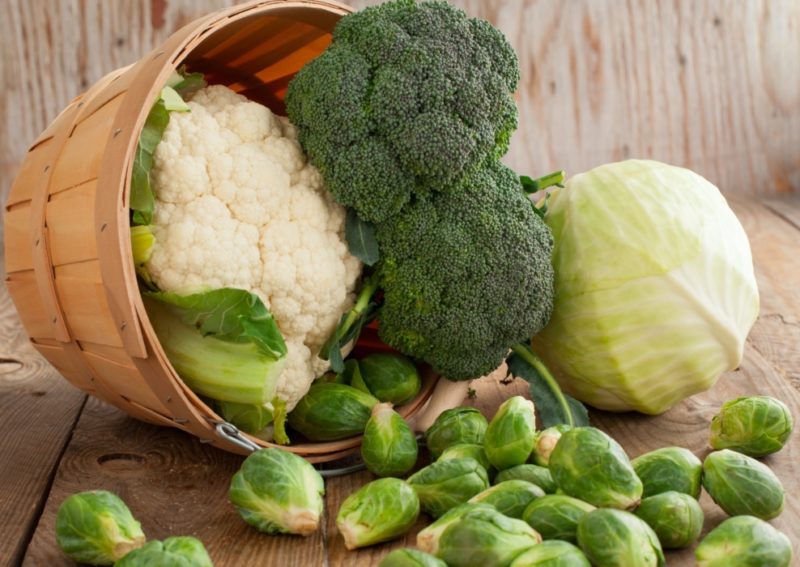The ancient Romans believed that cabbage is nothing but sweat droplets from the head of the god Jupiter. In ancient Egypt, it was served by the local nobility as a dessert. Today it is one of the main foods in the diet. Vitamin salads, side dishes, soups, delicious pies are prepared from it. Find out how many calories in cabbage, what is its chemical composition and beneficial properties.
Material Content:
The chemical composition and nutritional value of cabbage
The following varieties of cabbage are distinguished: white cabbage, red cabbage, cauliflower, Brussels sprouts, kohlrabi, broccoli, etc.
The demand for crops is due to the following factors:
- pleasant taste;
- saturated vitamin composition;
- minimum calories
- unpretentiousness in cultivation.
Vegetables have features in shape, taste, nutritional value.
The chemical composition of white cabbage includes carbohydrates, proteins, vitamins, micro and macro elements, amino acids.
Cabbage in front of citrus fruits (lemons, tangerines), carrots by the amount of vitamin C. Biochemical characteristics of the leaves make it a valuable product and a natural doctor.
Red cabbage contains the substance anthocyanin. It is this - the reason for the specific coloring. The product contains proteins, fiber, sugar, vitamin C, B1, B2, B5, B6, B9, PP, H, minerals. Red cabbage is richer than white carotene 4 times.
Broccoli is similar to cauliflower, only its inflorescences have a bright green color. Its taste is more tender, nutritional value is higher. The composition of the vegetable is rich in vitamins A, K, C, group B, trace elements, folic acid, carotenoids.
Brussels sprouts are similar in composition to white cabbage, but contain more folic acid, vitamin C, and potassium.
Cauliflower is less saturated with nutrients than its broccoli “sister”. However, like other types, it contains in sufficient quantities minerals and vitamins. Due to less fiber, it is more easily absorbed by the body.
How many calories in different forms
Cabbage has a low energy value and is one of the main helpers in losing weight. It refers to products with calories with a minus sign. The body spends more energy on its absorption than it extracts.
Energy value of cabbage:
- white-headed - 28 kcal per 100 g;
- red-headed - 26 kcal per 100 g;
- broccoli - 28 kcal per 100 g;
- color - 30 kcal per 100 g;
- Brussels - 43 kcal per 100 g.
The calorie content of stewed cabbage depends on the amount of fat, additional ingredients: tomato paste, meat, onions. The nutritional range of the dish is from 49 to 400 kcal per 100 grams.
Dieters are surprised when they find out how many calories are in sauerkraut. The nutritional value of the dish is only 19 kcal per 100 grams. However, fiber cabbage for a long time gives a feeling of satiety. Feel free to use the product and lose weight!
The content of vitamins and minerals
This crop is a vitamin complex from nature itself.
The composition of all types of cabbage includes:
- vitamin C, E, K, PP, group B, biotin;
- trace elements (iron, iodine, cobalt, copper, zinc) and macrocells (potassium, magnesium, phosphorus, calcium, sodium).
They normalize the functioning of body systems, prevent diseases, increase immunity resistance to external factors, and give a sense of vitality.
Cabbage is a universal healer due to its biochemical composition.
Useful properties of a vegetable
The vegetable has established itself as a natural healer. Each species has unique healing properties.
White cabbage - an assistant in the treatment of diseases of the stomach, reducing high levels of "bad" cholesterol. It resists bacteria, gently cleanses the body, removes toxic substances. Regular use of the product is a warning of vitamin C deficiency. Ordinary cabbage fights edema in expectant mothers. A more delicate colored "sister" is used in the nutrition of children.
Red cabbage - an assistant in the prevention of heart disease. It is stored for a long time, enriches the body with vitamins in the winter. It is recommended to use it fresh.
Broccoli is a vitamin complex from nature itself. The antioxidants that make up the inflorescences reduce the risk of cardiovascular, oncological diseases, and inflammatory processes.
The use of Brussels sprouts is a warning of hypertension, the appearance of birth defects in babies.
Eating all types of cabbage is not recommended for diseases of the pancreas, after surgical interventions on the abdominal cavity. The increased acidity of the stomach is a restriction on the consumption of vegetable juice.
Introduce cabbage into the diet in a fresh, stewed, pickled form. A slender figure, healthy digestion, and elastic vessels are the result of a “friendship” with a valuable product.
Unlike the ancient Egyptians, it is available today to each of us.
















